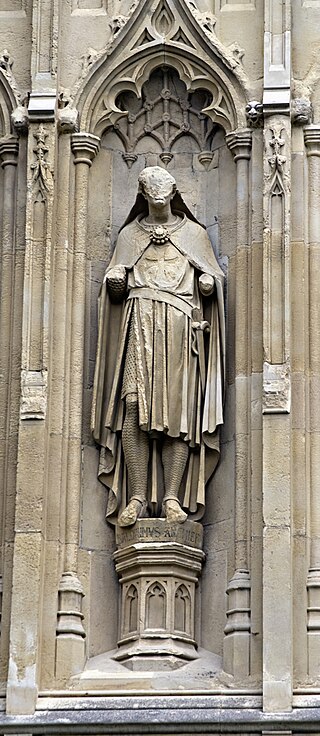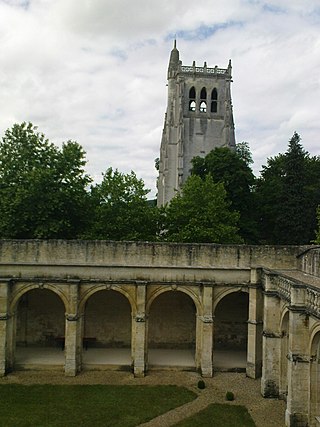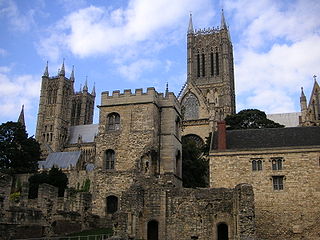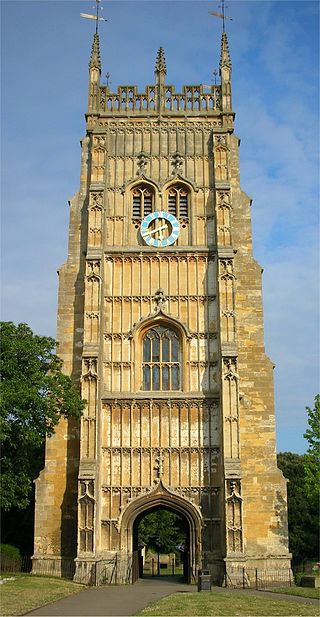Related Research Articles
Richard was a medieval Benedictine monk and Archbishop of Canterbury. Employed by Thomas Becket immediately before Becket's death, Richard arranged for Becket to be buried in Canterbury Cathedral and eventually succeeded Becket at Canterbury in a contentious election. Much of Richard's time as archbishop was spent in a dispute with Roger de Pont L'Evêque, the Archbishop of York over the primacy of England, and with St Augustine's Abbey in Canterbury over the archbishop's jurisdiction over the abbey. Richard had better relations with King Henry II of England than Becket had and was employed by the king on diplomatic affairs. Richard also had the trust of the papacy and served as a judge for it. Several of his questions to Pope Alexander III were collected into the Decretals, a collection of ecclesiastical laws, and his patronage of canon lawyers did much to advance the study of canon law in England.
Robert Bloet was Bishop of Lincoln 1093–1123 and Chancellor of England. Born into a noble Norman family, he became a royal clerk under King William I. Under William I's son and successor King William II, Bloet was first named chancellor then appointed to the See of Lincoln. Continuing to serve the king while bishop, Bloet remained a close royal councillor to William II's successor, King Henry I. He did much to embellish Lincoln Cathedral, and gave generously to his cathedral and other religious houses. He educated a number of noblemen, including illegitimate children of Henry I. He also was the patron of the medieval chronicler Henry of Huntingdon, and was an early patron of Gilbert of Sempringham, the founder of the Gilbertine monastic order.
Henry Murdac was abbot of Fountains Abbey and Archbishop of York in medieval England.

Baldwin of Forde or Ford was Archbishop of Canterbury between 1185 and 1190. The son of a clergyman, he studied canon law and theology at Bologna and was tutor to Pope Eugene III's nephew before returning to England to serve successive bishops of Exeter. After becoming a Cistercian monk he was named abbot of his monastery at Forde and subsequently elected to the episcopate at Worcester. Before becoming a bishop, he wrote theological works and sermons, some of which have survived.
Jocelin of Wells was a medieval Bishop of Bath. He was the brother of Hugh de Wells, who became Bishop of Lincoln. Jocelin became a canon of Wells Cathedral before 1200, and was elected bishop in 1206. During King John of England's dispute with Pope Innocent III, Jocelin at first remained with the king, but after the excommunication of John in late 1209, Jocelin went into exile. He returned to England in 1213, and was mentioned in Magna Carta in 1215.
Ælfric of Abingdon was a late 10th-century Archbishop of Canterbury. He previously held the offices of abbot of St Albans Abbey and Bishop of Ramsbury, as well as likely being the abbot of Abingdon Abbey. After his election to Canterbury, he continued to hold the bishopric of Ramsbury along with the archbishopric of Canterbury until his death in 1005. Ælfric may have altered the composition of Canterbury's cathedral chapter by changing the clergy serving in the cathedral from secular clergy to monks. In his will he left a ship to King Æthelred II of England as well as more ships to other legatees.
Savaric fitzGeldewin was an Englishman who became Bishop of Bath and Glastonbury in England. Related to his predecessor as well as to Emperor Henry VI, he was elected bishop on the insistence of his predecessor, who urged his election on the cathedral chapter of Bath. While bishop, Savaric spent many years attempting to annexe Glastonbury Abbey as part of his bishopric. Savaric also worked to secure the release of King Richard I of England from captivity, when the king was held by Emperor Henry VI.

Eynsham Abbey was a Benedictine monastery in Eynsham, Oxfordshire, in England between 1005 and 1538. King Æthelred allowed Æthelmær the Stout to found the abbey in 1005. There is some evidence that the abbey was built on the site of an earlier minster, probably founded in the 7th or 8th centuries. The site is a Scheduled Historic Monument.
Cyneweard was an Anglo-Saxon Bishop of Wells. He was a monk of Glastonbury Abbey before becoming abbot of Milton Abbey in 964. He was consecrated bishop of the Diocese of Wells in about 973 or 974, and died in office on 28 June 975. His death is mentioned in the short Old English poem "The Death of King Edgar", which occurs in the entry for 975 of two of the manuscripts of the Anglo-Saxon Chronicle.
Hugh of Beaulieu was a medieval English Bishop of Carlisle.
Seffrid I, sometimes known as Seffrid Pelochin, was a medieval Bishop of Chichester.
Leofwin was a medieval Bishop of Lichfield.

Hugh Nonant was a medieval Bishop of Coventry in England. A great-nephew and nephew of two Bishops of Lisieux, he held the office of archdeacon in that diocese before serving successively Thomas Becket, the Archbishop of Canterbury and King Henry II of England. Diplomatic successes earned him the nomination to Coventry, but diplomatic missions after his elevation led to a long delay before he was consecrated. After King Henry's death, Nonant served Henry's son, King Richard I, who rewarded him with the office of sheriff in three counties. Nonant replaced his monastic cathedral chapter with secular clergy, and attempted to persuade his fellow bishops to do the same, but was unsuccessful. When King Richard was captured and held for ransom, Nonant supported Prince John's efforts to seize power in England, but had to purchase Richard's favour when the king returned.
Robert de Chesney was a medieval English Bishop of Lincoln. He was the brother of an important royal official, William de Chesney, and the uncle of Gilbert Foliot, successively Bishop of Hereford and Bishop of London. Educated at Oxford or Paris, Chesney was Archdeacon of Leicester before his election as bishop in December 1148.

Hugh of Wells was a medieval Bishop of Lincoln. He began his career in the diocese of Bath, where he served two successive bishops, before joining royal service under King John of England. He served in the royal administration until 1209, when he was elected to the see, or bishopric, of Lincoln. When John was excommunicated by Pope Innocent III in November 1209, Hugh went into exile in France, where he remained until 1213.

Dominic of Evesham was a medieval prior of Evesham Abbey in England and writer of religious texts. Probably a native Englishman, there is some confusion about when he became a monk, but by 1104 he was at Evesham and by 1125 he held the office of prior. He is chiefly known for his religious works, including one on the miracles of the Virgin Mary that was an important source for later writings on the subject. Four of his works are still extant.
Thomas of Marlborough was a medieval English monk and writer. He became abbot of Evesham Abbey in 1230.

Ralph Gubion was a native Englishman and abbot of St Albans Abbey from 1146 to 1151.
Roger Norreis was Abbot of Evesham in England. He was a controversial figure, installed in several offices against opposition. In his appointment to Evesham, he was accused of immoral behaviour and failing to follow monastic rules. In 1202, Norreis became embroiled in a dispute with his monks and his episcopal superior the Bishop of Worcester; litigation and argumentation lasted until his deposition in 1213. He was then appointed prior of a subsidiary monastic house of Evesham, but was deposed within months, then re-appointed to the office five years later.
Clarembald was a medieval Benedictine monk and abbot-elect of St Augustine's Abbey in Canterbury, Kent.
References
- Farmer, D. H. (2004). "Eynsham, Adam of (b. c.1155, d. in or after 1233)". Oxford Dictionary of National Biography. Oxford University Press. Retrieved 17 May 2010.(subscription or UK public library membership required)
- Knowles, David (1976). The Monastic Order in England: A History of its Development from the Times of St. Dunstan to the Fourth Lateran Council, 940–1216 (Second reprint ed.). Cambridge, UK: Cambridge University Press. ISBN 0-521-05479-6.
- Smith, David M.; London, Vera C. M. (2001). The Heads of Religious Houses, England and Wales II. 1216–1377. Cambridge, UK: Cambridge University Press. ISBN 0-521-80271-7.